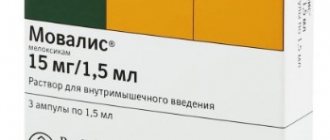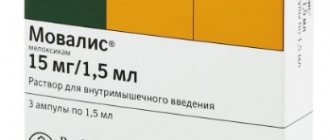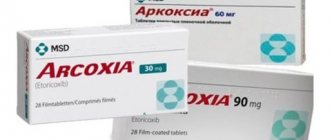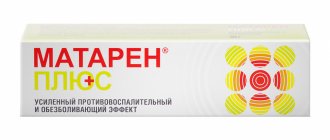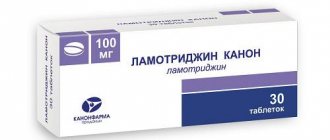Back pain is a common reason for patients to visit a doctor. There are many pathologies characterized by back pain: osteochondrosis, osteoarthritis, rheumatoid arthritis, spinal hernia. Movalis is one of the most effective drugs that can relieve pain.
Active ingredient
The active component of the drug, meloxicam, relieves any inflammation. This has been proven by clinical trials. Meloxicam inhibits the synthesis of prostaglandins (Pg), which are known to be mediators of inflammation. That is, Movalis acts precisely. As for cartilage tissue, it does not experience any negative effects during a course of taking the drug.
The pharmacological market boasts a variety of dosage forms of the drug: tablets, injection solution, rectal suppositories (suppositories), suspensions.
Movalis against arthritis of the fingers
It is worth noting that the injections are intended for the first 2-3 days of therapy, when the inflammatory and pain syndrome is most pronounced. After pain and inflammation are relieved, treatment continues using available dosage forms.
The analgesic effect can be observed after 30 minutes and lasts about a day after taking Movalis.
Indications
What do pills help with?
- symptomatic treatment of aggravated osteoarthritis;
- long-term treatment of infectious nonspecific polyarthritis and rheumatoid spondylitis.
What do injections help with?
- short-term treatment of an acute attack of infectious nonspecific polyarthritis or rheumatoid spondylitis, when the rectal and oral routes of administration of the drug Movalis are impossible.
Why is the suspension prescribed?
- symptomatic treatment of osteoarthritis (including with a pain component), rheumatoid arthritis (including juvenile arthritis), rheumatoid spondylitis
https://youtu.be/8EVNULLHQhs
Contraindications
The use of Movalis is prohibited in the following cases:
- active gastrointestinal bleeding, recent cerebrovascular bleeding or established diagnosis of diseases of the blood coagulation system;
- concomitant therapy with anticoagulants, because there is a risk of intramuscular hematoma formation;
- severe liver failure;
- severe heart failure;
- severe renal failure (if hemodialysis is not performed, CC <30 ml/min, and also with confirmed hyperkalemia);
- active liver disease;
- erosive and ulcerative lesions of the stomach and duodenum in the acute phase or recently suffered;
- inflammatory bowel diseases (Crohn's disease or ulcerative colitis in the acute phase);
- therapy of perioperative pain during coronary artery bypass grafting;
- pregnancy;
- lactation period (breastfeeding);
- age under 18 years;
- hypersensitivity to the active substance or auxiliary components of the drug.
- hypersensitivity (including to other NSAIDs), complete or incomplete combination of bronchial asthma, recurrent polyposis of the nose or paranasal sinuses, angioedema or urticaria caused by intolerance to acetylsalicylic acid or other NSAIDs (including a history) due to existing potential for cross-sensitivity.
Movalis should be used with caution in old age
Use with caution if you have:
- history of gastrointestinal diseases (presence of Helicobacter pylori infection);
- congestive heart failure;
- cerebrovascular diseases;
- dyslipidemia/hyperlipidemia;
- diabetes;
- peripheral arterial disease;
- renal failure (creatinine clearance 30-60 ml/min);
- IHD;
- elderly age;
- long-term use of NSAIDs;
- smoking;
- frequent drinking of alcohol;
- concomitant therapy with the following drugs: anticoagulants, oral corticosteroids, antiplatelet agents, selective serotonin reuptake inhibitors.
Contraindications for use in pediatrics:
- tablets - age up to 16 years;
- d/i solution - age up to 18 years;
- candles - age up to 12 years;
- suspension - age up to 12 years (for juvenile arthritis, the restriction for use is age up to 2 years).
Side effects
Side effects - headache
As with therapy with other NSAIDs, while taking Movalis, there is a possibility of adverse reactions from the body:
- From the urinary system: edema, hypercreatininemia, increased urea concentration. In rare cases - interstitial nephritis, glomerulonephritis, renal medullary necrosis, nephrotic syndrome.
- From the digestive system: nausea, vomiting, belching, abdominal pain, constipation or diarrhea, flatulence, increased activity of “liver” transaminases, hyperbilirubinemia, stomatitis, erosive and ulcerative lesions of the gastrointestinal tract, gastrointestinal bleeding (hidden or obvious), perforation of the digestive tract canal, colitis, dyspepsia, gastroduodenal ulcer, esophagitis, gastritis, hepatitis.
- From the cardiovascular system: increased blood pressure, “flushes” of blood to the skin of the face and upper chest, palpitations.
- From the nervous system: dizziness, headache, drowsiness, mood lability, confusion, disorientation..
- From the hematopoietic organs: anemia, leukopenia, thrombocytopenia.
- Allergic reactions: skin rash, itching, blisters, erythema multiforme, Lyell's syndrome, bullous dermatitis, Stevens-Johnson syndrome, angioedema, hypersensitivity to UV radiation, urticaria, anaphylactoid reactions.
- Other: ringing in the ears, blurred vision, conjunctivitis.
Combination use of the drug Movalis and drugs that suppress the functioning of the bone marrow can provoke cytopenia (deficiency of one or more types of blood cells). If gastrointestinal bleeding, perforation or ulcer occurs during treatment with Movalis, this can lead to death.
When using a d/i solution, the following are possible:
- glomerular or interstitial nephritis;
- papillary necrosis;
- nephrotic syndrome;
- swelling and pain at the injection site.
Amelotex
The drug Amelotex is a domestic substitute for Movalis in ampoules with the same active ingredient. Contraindications and side effects for use are similar. The medicine acts quickly and remains in the blood for a long time after administration. A comparison of the difference in activity of the drugs is given below:
| Characteristics | Movalis | Amelotex |
| Bioavailability, % | 99 | 99 |
| Maximum concentration, hour | 5-6 | 5-6 |
| Withdrawal time, hour | 20 | 15 |
- Meatballs in the oven with gravy: recipes
- Anaerobic load - what is it. Anaerobic workouts for weight loss and fat burning with video
- Basic exercises in the gym
How to take Movalis
General advice for the use of any of the dosage forms of Movalis is that the drug is recommended to be used in the minimum effective dose, and the therapeutic course should last as short as possible. Moreover, during treatment, it is recommended to assess the need for taking the drug and the body’s response. During the day, you can take, regardless of the dosage form of the drug Movalis, only 15 mg/day. This is the maximum for the day.
How to take Movalis medicine correctly?
Movalis tablets and suspension are taken orally during meals with a sufficient amount of water.
- osteoarthritis: 7.5 mg/day. If indicated and the severity of the pain syndrome, it is possible to increase the dose to 15 mg/day;
- rheumatoid arthritis, ankylosing spondylitis: 15 mg/day. (possibly reducing the dose by 2 times);
- Children under 12 years of age are prescribed Movalis in the form of a suspension for the treatment of juvenile rheumatoid arthritis. The dose is calculated based on body weight - 0.125 mg/kg (maximum - 7.5 mg per day).
- children 12-18 years old with juvenile rheumatoid arthritis: 0.25 mg/kg, but not more than 15 mg per day.
It is recommended to use the following dosage regimen (amount of active substance/volume of suspension):
- 12 kg: 1.5 mg/1 ml;
- 24 kg: 3 mg/2 ml;
- 36 kg: 4.5 mg/3 ml;
- 48 kg: 6 mg/4 ml;
- From 60 kg: 7.5 mg/5 ml.
What is Movalis
The basis of this non-steroidal anti-inflammatory drug (NSAID) Movalis is the active substance meloxicam, the mechanism of action of which is to selectively slow down the synthesis of prostaglandin enzymes that cause inflammation. This drug at the same time:
- fights inflammation;
- relieves high fever;
- eliminates acute pain.
An anesthetic medicine with an antipyretic effect in injection solutions is recommended for severe pain in diseased joints (arthritis, arthrosis), spinal diseases, rheumatoid diseases, osteoarthritis, spondylitis, neuralgia and pinched nerves at the beginning of treatment, when the pain syndrome is pronounced. The drug has a long-lasting effect and does not have many undesirable side effects that are characteristic of drugs of this non-steroidal anti-inflammatory group.
Injections with Movalis: instructions for use
Movalis in ampoules is used exclusively intramuscularly (intravenous use is prohibited). The medicine is administered once in a dose of 15 mg. Typically, injections with Movalis are used in the first 2-3 days of therapy.
The medicine is administered slowly, by deep injection into the gluteus maximus muscle.
The recommended daily dose is 7.5 mg or 15 mg 1 time/day, depending on the intensity of pain and the severity of the inflammatory process.
- Osteoarthritis with pain: 7.5 mg/day. If necessary, the dose can be increased to 15 mg/day;
- Rheumatoid arthritis: 15 mg/day. Depending on the therapeutic effect, the dose can be reduced to 7.5 mg/day;
- Ankylosing spondylitis: 15 mg/day. Depending on the therapeutic effect, the dose can be reduced to 7.5 mg/day.
Movalis suppositories: instructions for use
For adults with osteoarthritis, rheumatoid arthritis or spondylitis, rectal suppositories are administered at a dose of 7.5 mg 1 time / day. If indicated, the dose can be increased to the maximum possible per day - 15 mg.
Pharmacological properties of the drug Movalis
Pharmacodynamics. Meloxicam is an NSAID of the enolic acid class, has anti-inflammatory, analgesic and antipyretic effects. Meloxicam exhibits high anti-inflammatory activity in all standard models of inflammation. The mechanism of action is due to the ability to inhibit the biosynthesis of prostaglandins - mediators of inflammation due to the selective inhibition of COX-2, while providing a safer mechanism of action due to the selective inhibition of COX-2 compared to COX-1. It has now been proven that the therapeutic effect of NSAIDs is associated with inhibition of COX-2 synthesis, while inhibition of COX-1 leads to side effects from the stomach and kidneys. The selectivity of COX-2 inhibition by meloxicam has been confirmed by many researchers both in vitro and ex vivo . Meloxicam (7.5 and 15 mg) preferentially inhibits COX-2 ex vivo , as evidenced by greater inhibition of PGE2 production in response to lipopolysaccharide stimulation compared with clotted blood thromboxane (COX-1) production. These effects are dose dependent. Meloxicam does not affect platelet aggregation or bleeding time when used at recommended ex vivo , whereas indomethacin, diclofenac, ibuprofen and naproxen significantly inhibit platelet aggregation and increase bleeding time. Clinical studies have shown a low incidence of gastrointestinal side effects (perforation, ulceration and bleeding) when using meloxicam at recommended doses compared to standard doses of other NSAIDs. Pharmacokinetics. Meloxicam is well absorbed from the gastrointestinal tract when administered orally; The absolute bioavailability of the drug is 89%. Concomitant consumption of food does not affect the absorption of the drug. The concentration of the drug when taken orally is 7.5 and 15 mg per day, respectively, dose-dependent. A stable concentration is achieved on days 3–5. Continuous treatment over a long period (eg 6 months) did not lead to changes in pharmacokinetic parameters compared to parameters after 2 weeks of oral administration of meloxicam at a dose of 15 mg per day. Any changes are also unlikely if treatment lasts more than 6 months. More than 99% of meloxicam is bound to plasma proteins. The drug penetrates into the synovial fluid, its concentration there is 2 times lower than in the blood plasma. After intramuscular injection, meloxicam is completely absorbed, indicating its absolute bioavailability (almost 100%). The pharmacokinetics of meloxicam is linear and dose-dependent when administered intramuscularly in doses of 7.5 and 15 mg. The concentration of meloxicam in blood plasma reaches a maximum 60 minutes after intramuscular injection. Meloxicam undergoes extensive biotransformation in the liver. Meloxicam is almost completely metabolized to 4 pharmacological inert metabolites. The main metabolite, 5-carboxymeloxicam (60% of the dose), is formed by oxidation of the intermediate metabolite 5-hydroxymethylmeloxicam, which is excreted to a lesser extent (9% of the dose). In vitro studies suggest that CYP 2C9 plays an important role in metabolism, CYP 3A4 to a lesser extent. Peroxidase activity in patients is likely responsible for 2 other metabolites, which account for 16 and 4% of the dose received, respectively. Meloxicam is excreted, predominantly in the form of metabolites, in equal amounts in urine and feces. Less than 5% of the daily dose is excreted unchanged in the feces, while only traces of the unchanged substance are excreted in the urine. The half-life is about 20 hours. Hepatic and renal failure do not significantly affect the pharmacokinetics of meloxicam. Plasma clearance is 8 ml/min. Clearance decreases in older women. The volume of distribution is low, averaging 11 L. Individual deviations are 30–40% after IM application.
Special instructions for the use of the drug Movalis:
- for patients with an increased risk of adverse reactions (history of gastrointestinal diseases, presence of risk factors for cardiovascular diseases), the recommended initial daily dose is 7.5 mg;
- For patients with severe renal failure on hemodialysis and the elderly, a dose of 7.5 mg/day is recommended, which should not be exceeded;
- patients with insufficient renal function in which Clcr exceeds 25 ml/min., patients with mild/moderate liver failure, as well as clinically stable cirrhosis do not require dose adjustment.
Important! The required dosage and course duration are determined by the attending physician.
Movalis during pregnancy and breastfeeding
As with other Pg (prostaglandin) inhibitors, meloxicam may have a negative effect on fertility. Therefore, when planning pregnancy, it is recommended to discontinue therapy with this drug.
Movalis during pregnancy
Suppression of prostaglandin synthesis has a negative impact on the development of pregnancy and/or the fetus. In particular, clinical data suggest that Movalis in the first and second trimesters of pregnancy increases the risk of miscarriages, as well as the chance of gastroschisis and heart defects in the fetus. Therefore, during this period, Movalis is prescribed by a doctor only if there is a real threat to the mother’s life.
As for the third trimester, taking the drug at this time can lead to abnormalities in fetal development:
- cardiorespiratory toxicity;
- renal dysfunction, which can develop into renal failure with oligohydramnios.
In addition, taking Movalis in the last weeks of pregnancy can provoke an increase in bleeding time, the development of an antiaggregation effect, inhibition of the ability of the smooth muscles of the uterus to contract, and this leads to a delay or disruption of the birth process.
The active component of Movalis easily passes into mother's breast milk, so it should not be taken during breastfeeding (breastfeeding).
Analogue of Movalis in ampoules made in Russia
The domestic pharmaceutical market offers a considerable list of Russian drug substitutes, which have certain advantages - low price, combined with control over counterfeiting of medicines at the state level. As an alternative to Movalis in injections, Russian production offers:
- Amelotex;
- Arthrozan;
- Bi-Xicam;
- Lem;
- Mataren;
- Meloxicam;
- Movasin.
Movalis and alcohol
Is it possible to combine Movalis with alcohol?
There is no clear prohibition on the simultaneous use of Movalis and alcohol in the instructions for use. True, this does not mean that such a combination will not cause harm. Thus, drinking alcohol during therapeutic treatment with the drug can lead to acute renal failure. This occurs due to dehydration, which is caused by alcohol.
The best analogues
There are numerous analogues of the original patented drug. Their main difference is the inclusion of auxiliary components in different proportions. The choice of generic drugs is often resorted to due to the high cost of the original, and some patients seek to change the drug as it no longer has the original effect. The best similar drugs, according to reviews from patients and doctors, are: Meloxicam, Movasin, Arthrozan and Amelotex. The last two are considered the most worthy in terms of price-quality ratio.
Is it possible to take Milgamma, Movalis and Mydocalm at the same time?
If the pain is severe, causes discomfort, cannot be tolerated, and affects the usual rhythm of life, then the doctor may prescribe a combined treatment system. Milgamma and Mydocalm are often prescribed along with Movalis, which have shown good results in the treatment of certain diseases (intervertebral hernia, osteochondrosis). But before injecting Movalis, Milgamma and Mydocalm, you need to visit a doctor, since these drugs in any case have contraindications and the risk of developing negative reactions in the patient’s body.
- Movalis is a non-steroidal anti-inflammatory drug. Its use is indicated in the treatment of diseases of the musculoskeletal system to relieve inflammation, pain and lower temperature.
- Milgamma is a combined multivitamin product consisting of B vitamins. When diagnosing diseases of the musculoskeletal system, Milgamma injections are prescribed to improve blood circulation, nourish cartilage and bone tissue, and strengthen the nervous system.
- Mydocalm is a muscle relaxant. The drug relieves muscle spasms, reduces muscle tension, reduces compression of nerve endings and eliminates pain.
The classic treatment regimen with Movalis, Milgamma and Mydocalm looks like this: during the first three days, Movalis injections are administered once a day, then the patient is transferred to the tablet form of the drug. Milgamma is administered 2 ml IM once a day. Then injections are given two to three times a week, or the tablet form of Milgamma is prescribed.
Mydocalm injections (100 mg) are indicated 2 times a day, the dosage is 100 mg. To enhance the effect, injections can be given on the same day.
Thus, Movalis, Milgamma and Mydocalm are prescribed to eliminate the symptoms of the disease. Despite the fact that the drugs belong to different pharmacological groups, when used together they give positive dynamics during therapy.
It is worth remembering that for patients who are sensitive or intolerant to lidocaine, this treatment regimen is contraindicated.
Movalis is an anniversary in the NSAID family. Efficiency, safety, application prospects
The article discusses the practical use of one of the most popular representatives of non-steroidal anti-inflammatory drugs, which celebrates the twentieth anniversary of its use in Russia - meloxicam (the drug Movalis). The features of pharmacokinetics, pharmacodynamics and pharmacoeconomics of the drug are discussed. The most common mistakes that doctors make when prescribing non-steroidal anti-inflammatory drugs in general and Movalis in particular are examined. The results of studies on the effectiveness and safety of Movalis are presented, and the prospects for its use are outlined.
NSAIDs in modern clinical practice
Physicians of various specialties routinely prescribe nonsteroidal anti-inflammatory drugs (NSAIDs) in clinical practice. A wide spectrum of action (anti-inflammatory, analgesic, antipyretic effect) and an impressive list of indications for use (colds, diseases accompanied by inflammation, pain, etc.) make NSAIDs popular among both doctors and patients. This demand for NSAIDs has both positive and negative consequences.
On the one hand, the importance of NSAIDs is difficult to overestimate. The number of clinical studies on the effectiveness and safety of certain NSAIDs is enormous. Income from the sale of NSAIDs is comparable to the budgets of some countries.
On the other hand, these drugs also lead in inappropriate use. Each practicing physician has his own preferences among NSAIDs, his own views on their effectiveness and safety, as well as the duration of their use. However, the doctor’s opinion does not always correspond to the truth and is formed under the influence of publications in the scientific press or the work of medical representatives. Errors are made when determining the dose, duration of administration, choosing a dosage form, and prescribing NSAIDs in combination with other drugs. This reduces the effectiveness of treatment and increases the risk of developing a variety of adverse events.
Separately, the problem of uncontrolled use of NSAIDs by patients should be highlighted, including the use of NSAIDs in childhood without a doctor’s recommendation. This is largely due to the intrusive advertising of over-the-counter NSAIDs in the media, which pushes patients towards so-called responsible self-medication. In addition, prescription NSAIDs in practice are prescribed by doctors in the form of oral recommendations and are sold in pharmacies without prescriptions. Note that NSAIDs are divided into over-the-counter and prescription drugs formally, not by mechanism of action, but depending on dosages, forms of release, potential simplicity and frequency of administration.
NSAIDs: myths and reality
The history of the use of anti-inflammatory drugs in pain therapy goes back several millennia, dating back to Ancient Egypt and the times of Hippocrates. Anti-inflammatory drugs have gone from willow leaves and bark, willow bark extract to quinine, salicin and more modern drugs such as phenazone (antipyrine), aminophenazone (pyramidon, amidopyrine), aspirin.
In the 20th century The development of new anti-inflammatory drugs and their dosage forms has accelerated dramatically. Experience in the use of NSAIDs was accumulated, not only the effectiveness of the drugs was assessed, but also the frequency of adverse reactions, the severity of which stopped one or another direction of development of NSAIDs. Even then, due to the demand for effective medicines, counterfeits began to appear, produced in an artisanal way with a violation of production technology, a small amount of active substance and a large proportion of ballast substances, which complicated the control of adverse events accompanying the use of original drugs [1].
As scientific knowledge and practical experience in the use of NSAIDs accumulated, a “snowball” of inadequate and misconceptions about the action, side effects and forms of drug administration grew. This distorted perception is partly a consequence of doctors' personal experiences and the influence of patients and doctors on each other, and partly the result of educational lectures and events. Trainees often perceive information about various adverse reactions and possible complications not as a result of the mechanism of action of a particular drug, but in general, for the entire group of NSAIDs.
Unfortunately, doctors’ ideas about the statistical probability of developing complications do not correspond to frequency characteristics. There are common myths among doctors and patients that the speed of development of the effect and the severity of side effects are related to the route of administration of the drug. Thus, in the opinion of doctors, injection forms of administration correspond to “more rapid development of the effect” and, as a consequence, insignificant severity of side effects. Proponents of injectable forms often forget about the potential risks of any injection, as well as the cost of treating such complications. Another common myth is that oral tablet forms “act slower” and “have a worse effect on the stomach.” According to many, rectal forms are devoid of such shortcomings, which, of course, is not true.
Thus, each method of drug administration has, in addition to physiological characteristics, also a psychological aspect, which largely depends on the initial beliefs of patients and doctors. This is partly due to the placebo effect or a similar effect that enhances the effect of the real drug. Patients, not accepting reasonable arguments, remain true to their opinions and are more likely to change doctors than beliefs. To some extent, this “rigidity” of patients is explained by the extreme heterogeneity of doctors’ opinions on this issue, which naturally confuses patients [2].
In the fall of 2015, a survey was conducted on our website otdeleboli.rf (paindept.ru), in which both doctors and patients (n = 177) participated. To the question: “What works for you better and faster?” The following responses were received:
- droppers – 17%;
- ointments – 3%;
- injections IM or IV – 34%;
- candles – 10%;
- tablets – 8%;
- I don’t see any difference – 25%.
It must be said that doctors dominated among the respondents. The question was deliberately formulated incorrectly; only the forms of administration were indicated without mentioning specific medications. The vast majority mistakenly believed that the effectiveness of treatment depends on the form of administration, and not on the active substance.
Movalis: efficacy, safety, pharmacokinetic characteristics
A significant stage in changing ideas about the safety of NSAIDs was the emergence of selective cyclooxygenase (COX) 2 inhibitors. The first representative of selective, later called moderately selective, COX-2 inhibitors was the original drug meloxicam, known in our country as Movalis, and abroad as Mobic, a Boehringer Ingelheim company.
The largest studies of the effectiveness of meloxicam were MELISSA (Meloxicam Large Scale International Study Safety Assessment) and SELECT (Safety and Efficacy Large scale Evaluation of COX inhibiting Therapies) [3–5]. Almost 20 thousand patients with osteoarthritis took part in these two trials (9323 and 8656 patients, respectively). Meloxicam (7.5 mg/day) was equivalent in clinical efficacy to diclofenac (100 mg/day) and piroxicam (20 mg/day) [4, 5]. Discontinuation of drugs due to low effectiveness in the diclofenac, piroxicam and meloxicam groups did not exceed 1.7% [6].
Currently available in the Russian Federation is a tablet form of Movalis with a possible dosage regimen of 7.5 and 15 mg, a suspension with dose determination by measuring spoons (7.5 mg in 1 ml), which was initially positioned as a form for children and young patients with rheumatic diseases. In addition, there are injection forms for intramuscular administration No. 3, No. 5 and a form for hospital purchases No. 50. Outside Russia, there is also a form for intravenous administration.
The bioavailability of the tablet form of Movalis is close to 100% and practically reaches the values of the injection form. The maximum concentration in plasma with parenteral administration is achieved after 60 minutes, with a single oral administration of the drug - after five to six hours. Stabilization of pharmacokinetic parameters occurs on the third to fifth day of taking the drug. Movalis penetrates into intra-articular tissues in a concentration of 50% of the concentration in the blood plasma. Why is it so important to know the pharmacokinetic characteristics of a drug? The fact is that in clinical practice, doctors often prescribe NSAIDs without taking into account pharmacokinetic characteristics, as a result of which the drugs cannot demonstrate the optimal effect. As a result of inadequate use, patients lose faith in treatment, and the authority of the drug, the doctor, and the medical institution decreases.
For example, a doctor, when determining the duration of treatment with Movalis, can be guided by the number of injection ampoules No. 3 and prescribe the drug for an ultra-short period - for only three days. In reality, treatment should not be limited to a three-day course of injections; parenteral administration should be the initial stage of step therapy with a transition to taking the drug orally. Considering the insufficient motivation of doctors to increase the level of knowledge and not always a correct understanding of the pathophysiology of inflammation and pain, it is possible that general (class-specific) side effects are perceived without taking into account the degree of COX inhibition. Apparently, doctors who recommend a short course of treatment are afraid of the ulcerogenic effect inherent in non-selective COX inhibitors. This also explains the frequent prescription of NSAIDs under the guise of drugs from the group of proton pump inhibitors. Thus, doctors do not take into account the data on the safety profile of the drug and do not know that Movalis can be prescribed for a long term. Meanwhile, in the described MELISSA and SELECT studies, the duration of treatment with Movalis ranged from several weeks to several months and corresponded to safety indicators.
Advantages of original drugs
Taking into account the price category of Movalis and the policy of interchangeability of medicines actively pursued by the Russian Ministry of Health, based only on the international nonproprietary name, the question of choosing between the original drug and the generic becomes relevant. However, not all doctors, much less patients, understand what the difference is between original and generic drugs, besides price. Why do many doctors, calling for special attention to the choice of drug, insist on using the original drug? Will the original drug provide 100% effect? No one can promise this. Let's figure out whether a generic drug can provide any guarantees.
In addition to the main active ingredient - the so-called international non-proprietary name - the composition of the drug also includes ballast substances. Production technology also plays a significant role, compliance with which is ensured by a number of indicators that are not always made public.
In the USA and European countries, unlike Russia, when introducing generic drugs into clinical practice, such a parameter as clinical equivalence is taken into account - the result of a long-term comparison of the effectiveness of the generic drug and the original. In our country, only bioequivalence is mandatory. However, this data is not always provided to end users - doctors who choose the most affordable and effective remedy for their patients.
The quality of the original drug and the generic drug may also vary. Today, many opinions are expressed in the media about the certification of domestic pharmaceutical manufacturers according to GMP (good manufacturing practice) standards. At the same time, many generic medicines are presented on our market not only from Russia, but also from Southeast Asia. It is unknown whether the production technology of such drugs is followed in these countries, what ballast substances are used, and how this affects pharmacokinetic and pharmacodynamic parameters.
Manufacturers of generic drugs often do not conduct their own clinical studies, citing available data obtained from original drugs. Saving costs for conducting clinical trials, creating a design that meets the criteria of evidence-based medicine, and paying for the research itself, of course, allows you to reduce the price of the final product. The results of a number of studies comparing the effectiveness, as well as pharmacokinetic and pharmacodynamic parameters of original drugs and generic drugs, are available in the scientific press. For example, a comparison of the original diclofenac and the generic diclofenac showed significant differences in pharmacokinetic parameters, including the low bioavailability of the generic, which certainly casts doubt on the presence of therapeutic equivalence [7].
Prospects for the use of Movalis
During twenty years of active use in Russia, Movalis has been associated with the choice of safe treatment for chronic pain. The default treatment for acute pain has been the use of non-selective COX inhibitors, despite the fact that they cause known adverse reactions. The concept of choosing not only an effective, but also a safe drug for acute pain was not considered in this context. Such a compromise “effective pain relief with associated adverse events” is a standard situation for our country, since in Russia there is no calculation of the cost of the risks of treating side effects as such. Meanwhile, the choice of an anesthetic drug during surgery or NSAIDs for acute pain should also be made taking into account the relationship between pharmacological characteristics (pharmacodynamics and pharmacokinetics), the risk of side effects and pharmacoeconomic indicators.
In this regard, publications about a new niche that Movalis can occupy are of great interest - about the use of the drug in premedication and for acute pain, namely in perioperative pain relief during manipulations in the maxillofacial area.
T. Aoki et al. on 114 patients demonstrated the advantage of premedication with Movalis (Mobic) at a dose of 10 mg compared with piroxicam 27 mg and placebo [8]. M. A. Isidoria-Espinoza et al. on 50 patients showed more effective analgesia with Movalis at a dose of 15 mg compared with tramadol 50 mg (the drugs were administered 50 minutes before the procedure for wisdom tooth removal) [9]. E. Selimović et al. in 60 patients, the effectiveness of meloxicam at a dose of 15 mg, glucocorticoids (methylprednisolone) and their combination in removing wisdom teeth was compared; combination therapy had an advantage [10]. According to the results of EW Weber et al., the use of Movalis 15 mg, unlike non-selective NSAIDs during surgery, does not significantly increase blood loss [11].
These data allow us to take a fresh look at the drug Movalis, which has long been familiar to patients and practitioners. It may be that to better understand the effectiveness and safety of Movalis, additional studies will be required in a larger patient population with comparisons with other drugs used in premedication and treatment of acute pain. However, even the available data now allow us to safely use Movalis in surgical and dental practice.
Analogs
Analogues of Movalis on the pharmaceutical market are the following drugs: Mirlox, Artrosan, Melox, Meloxicam, Mataren.
As for Movalis injections, the doctor can replace them with medications containing the same active ingredient: Amelotex, Arthrozan, Meloxicam, Melbek, Liberum, Bi-xicam, Movasin, Mesipol.
Analogues of the drug Movalis
Movalis/Meloxicam
The drugs are based on the same active substance, so their therapeutic effect is identical. The only difference is the price.
Movalis/Voltaren
The active substance of Voltaren is diclofenac. Frequent development of side effects is noted. Unlike Voltaren, Movalis has a positive effect on cartilage metabolism. Therefore, both drugs are effective for pain relief, but for osteoarthritis, Movalis is better.
Movalis/Nise
The active substance of Nise is nimesulide. Both drugs are characterized by effectiveness in treating heat, inflammation and pain.
But nimesulide is toxic to the liver, but Movalis is not and does not have a similar effect.
Movalis relieves pain more slowly, but its effect is prolonged, while Nise is good for quickly relieving pain.
Analogs of Movalis in injections
Faced with the high price of the drug, not everyone is aware that there is a replacement for Movalis in injections with the same active ingredient. These medicinal analogues can be purchased at a lower cost of the drug and inexpensively. The proposed catalog of generics is extensive:
- Amelotex;
- Arthrozan;
- Bi-Xicam;
- Lem;
- Mataren;
- Movasin;
- M-Kam;
- Medsikam;
- Melbek;
- Meloxicam;
- Meloflam;
- Meloflex Rompharm;
- Mesipol;
- Mixol-Od;
- Mirlox;
- Movasin;
- Movix;
- Oxycamox;
- Exen-Sanovel.


